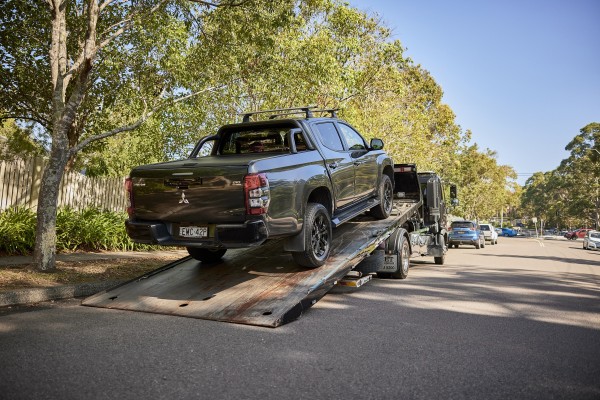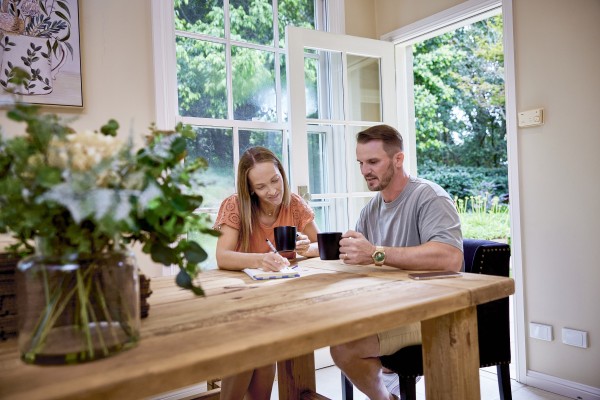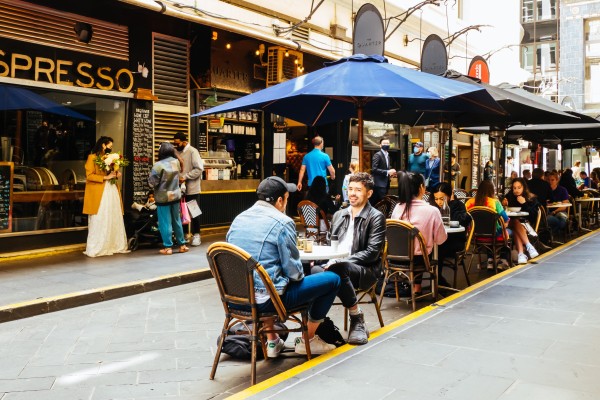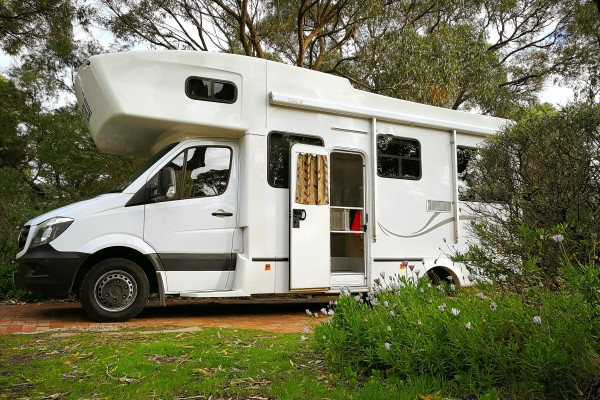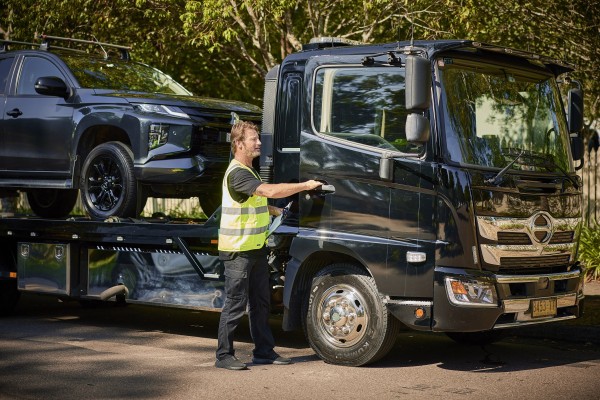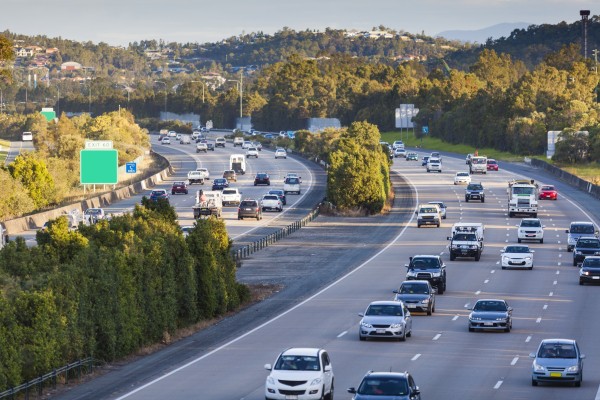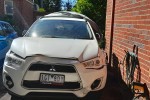Navigating education in Australia
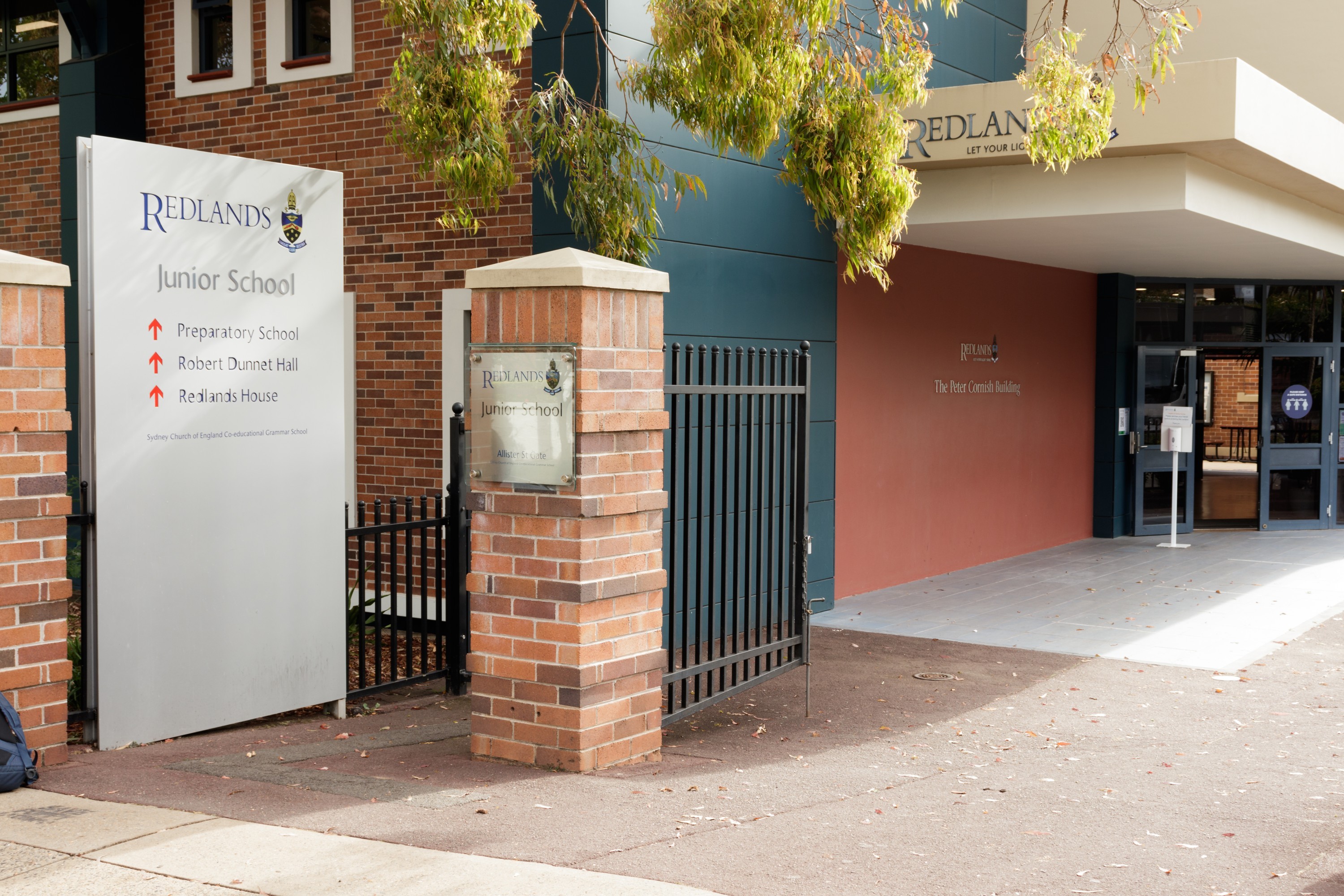
The Australian education system is highly regarded as one of the best in the world. In fact the country was ranked 3rd globally as a study destination for international students.
With four core levels of education on offer including primary, secondary, senior secondary and tertiary, there’s a learning option for every age group.
We’re diving into all of this and more.
The 4 stages of education in Australia
The Australian school system overview:
Kindergarten / preparatory / preschool
Pre school is the first step into the education system in Australia. Roughly 87% of all children aged 4, and 22% of all children aged 5 participate in preschool programs.
Primary & secondary
Primary and secondary education runs for a total of about 12 years and is compulsory for all children between the ages of 6 and 16.
Tertiary education
Post-secondary education is known as tertiary education. Tertiary education includes higher education and vocational education and training (VET) which are available at university and non-university institutes.
While not compulsory, tertiary education remains a popular pathway into employment for Australian residents. More than 40% of people aged 25-34 years old hold a tertiary qualification.
More than 40% of Australian people aged 25-34 years old hold a tertiary qualification.
National curriculum and assessment
Australia has a National Curriculum for schools to ensure all children receive similar learning outcomes across Australia.
This includes an annual assessment for students in Years 3, 5, 7 and 9 known as the National Assessment Program – Literacy and Numeracy (NAPLAN).
NAPLAN tests in four areas:
Results from NAPLAN show that almost 94 per cent of children meet national minimum standards for their age/stage.

Attendance and participation
In Australia in 2023:
People aged 20-24 years:
94 percent of children meet national minimum standards for their age/stage.
Public vs private education
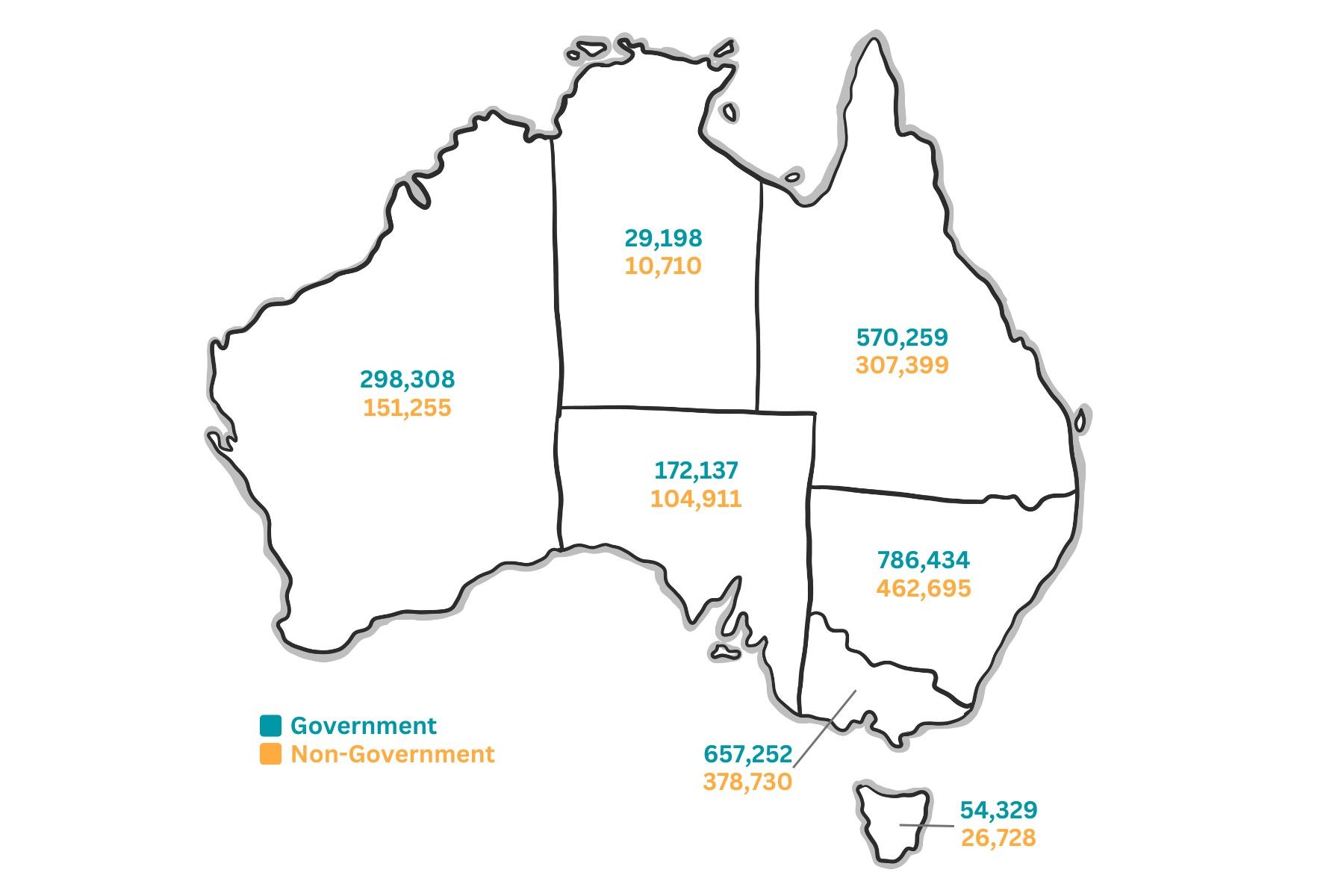
Compared to other countries, the Australian education system is highly privatised.
Of the 4 million+ students enrolled in schools across Australia, just 64% are enrolled in government schools with the remaining in catholic schools (19.7%) and independent schools (16.3%).
However, tertiary education paints a slightly different picture - according to the most recent data, the majority of higher education enrolments (93%) are enrolled in public universities.
Primary and secondary school fees
Tuition fees cost parents anywhere between $158 per year for public primary school to $12,860 per year for independent secondary schools - costs vary between State and Territories.
ACT holds the title as most expensive state for private primary schools. The average school tuition cost here is $8,511 per student, per year.
New South Wales has the most expensive private secondary schools with an average annual tuition cost of $12,860. That's $3,500 more than the average cost in Victoria.
When it comes to government education, South Australia has the highest cost. Schools here ask for an average voluntary contribution of $440 per year for primary levels and $978 for secondary students.
University fees
Tuition fees and the cost of studying in Australia will vary depending on:
Study Australia lists the average costs as follows:
| Education Type | Average Tuition |
| English language course | $300 per week |
| Vocational Education and Training | $4,000 - $22,000 per year |
| Foundation courses | $15,000 - $33,000 total |
| Bachelor Degree | $15,000 - $33,000 per year |
| Master's Degree | $14,000 - $37,000 per year |
| Doctoral Degree | $14,000 - $37,000 per year |
| MBA | $11,000 - $121,000 per year |
The Australian academic year
One of the most notable differences between the education system in Australia and those in the northern hemisphere is the academic year.

Schools
Schools start in late January / early February (depending on the state or territory) and end in December, for the summer break.
Generally speaking there are four terms, three that have a 2 - 3 week break between the first three terms, ending the year with a 6 week break over Christmas and New Year.
Attendance at school is Monday through to Friday each week with typical school hours running between 8:30am and 3:30pm.
University / VET
The university teaching year is split into three semesters:
The Summer semester is usually optional.
The best primary school in Australia is Sydney Grammar School in Darlinghurst while the best secondary school is James Ruse Agricultural High School in Carlingford.
The best schools in Australia
There are close to 10,000 schools in Australia including a mix of private and public primary and secondary schools.
The best primary school in the country according to Better Education is Sydney Grammar School in Darlinghurst while the best secondary school is James Ruse Agricultural High School in Carlingford.
The schools in the study are rated based upon Maths, English and overall academic performance.
Best primary schools in Australia
| School | Location | Sector |
| Sydney Grammar School | Darlinghurst | Non-government |
| Northcross Christian School | Ryde, NSW | Non-government |
| Presbyterian Ladies College | Burwood, VIC | Non-government |
| Abbotsleigh | Wahroonga, NSW | Non-government |
| Arden Anglican School | Beecroft, NSW | Non-government |
| St Aloysius’ College | Milsons Point, NSW | Non-government |
| Al-Faisal College | Minto, NSW | Non-government |
| St Andrews Christian College | Wantirna South, VIC | Non-government |
| Huntingtower School | Mount Waverley, VIC | Non-government |
Best secondary schools in Australia
| School | Location | Sector |
| James Ruse Agricultural High School | Carlingford | Government |
| Baulkham Hills High School | Baulkham Hills, NSW | Government |
| North Sydney Boys High School | Sydney, NSW | Government |
| North Sydney Girls High School | Sydney, NSW | Government |
| Sydney Boys High School | Sydney, NSW | Government |
| Sydney Girls High School | Sydney, NSW | Government |
| Hornsby Girls High School | Hornsby, NSW | Government |
| Normanhurst Boys High School | Normanhurst, NSW | Government |
| Girraween High School | Girraween, NSW | Government |
| Perth Modern School | Perth, WA | Government |
Best universities in Australia
Australia is home to over 40 universities, many of which are recognised globally for their courses, facilities, research and the subsequent opportunities they present to students. There are a number of different factors to consider when deciding which university is best for you. We’ve outlined the top universities in Australia based on the following categories: best all round university, most sustainable university, top university for climate action.

Best all-round university globally
The best university in Australia overall is the University of Melbourne according to the Times Higher Education’s World University Rankings 2024 (THE). The study looked at the teaching, research environment, research quality , industry, and international outlook at 1,906 universities across 108 countries. The below table shows Australian universities that were ranked in the study along with their global rankings.
| Australian Ranking | Global ranking | University | City | State/ territory |
| 1 | 37 | University of Melbourne | Melbourne | Victoria |
| 2 | 54 | Monash University | Melbourne | Victoria |
| 3 | 60 | University of Sydney | Sydney | NSW |
| 4 | 67 | Australian National University | Canberra | ACT |
| 5 | 70 | The University of Queensland | Brisbane | QLD |
| 6 | 84 | UNSW Sydney | Kensington | NSW |
| 7 | 111 | University of Adelaide | Adelaide | SA |
| 8 | 143 | The University of Western Australia | Perth | WA |
| 9 | 148 | University of Technology Sydney | Sydney | NSW |
| 10 | 180 | Macquarie University | Sydney | NSW |
Most sustainable university globally
Interestingly, in a separate study assessing universities against the United Nations’ Sustainable Development Goals (SDGs) Western Sydney University ranked in first place globally.
The study compared 1,705 universities from 115 countries and regions. It looked at four broad areas including: research, stewardship, outreach and teaching.
The below table shows Australian universities that were ranked in the study along with their global rankings.
| Australian Ranking | Global ranking | University | City | State/ territory |
| 1 | 1 | Western Sydney University | Melbourne | Victoria |
| 2 | 5 | University of Tasmania | Tasmania | TAS |
| 3 | 7 | RMIT University | Melbourne | Victoria |
| 4 | 12 | University of Technology Sydney | Sydney | NSW |
| 5 | 18 | UNSW Sydney | Sydney | NSW |
| 6 | 21 | Monash University | Melbourne | Victoria |
| 7 | 28 | University of Newcastle | Newcastle | NSW |
| 8 | 29 | University of the Sunshine Coast | Sunshine Coast | QLD |
| 9 | 39 | Macquarie University | Sydney | NSW |
| 10 | 57 | La Trobe University | Melbourne | Victoria |
Top university for climate action
When it comes to climate action it seems Australian Universities take the two top spots globally with University of Tasmania, UNSW Sydney and University of Victoria all receiving recognition in the Top universities for climate action 2023 study.
The below table shows the top 10 Australian universities that were ranked in the study along with their global rankings.
| Australian Ranking | Global ranking | University | City | State/ territory |
| 1 | 1 | University of Tasmania | Tasmania | TAS |
| 2 | 2 | UNSW Sydney | Sydney | NSW |
| 3 | 7 | Western Sydney University | Sydney | NSW |
| 4 | 12 | University of Newcastle | Newcastle | NSW |
| 5 | 13 | Macquarie University | Sydney | NSW |
| 6 | 17 | RMIT University | Melbourne | Victoria |
| 7 | 19 | Australian National University | Canberra | ACT |
| 8 | 26 | University of Technology Sydney | Sydney | NSW |
| 9 | 28 | University of the Sunshine Coast | Sunshine Coast | QLD |
| 10 | 41 | University of Wollongong | Wollongong | NSW |
Most popular tertiary courses in Australia
There are thousands of tertiary courses for students to choose from in Australia but a few disciplines stand out when it comes to overall popularity.
In a recent study analysing data from students enrolled in tertiary courses, the most popular tertiary courses were in the fields of:
The study also found that female students were more likely to study in the field of society and culture, and health while male students were more likely to study engineering and related technologies.
Australian Education Fast Facts
Australia is ranked:
Australia also has:
Education in Australia FAQs
What is tertiary education in Australia?
Tertiary education is also known as higher education, third-level education or post-secondary education. It is simply a level of learning that follows the completion of secondary school. Tertiary education is delivered in universities, TAFE’s, Registered training organisations and colleges.
Is education free in Australia?
There are public primary and secondary schools that are free to attend. However private schools, universities, colleges and pre-schools are generally fee-paying.
What is secondary education in Australia?
Secondary school runs for 6 years on completion of primary education. It is compulsory until the age of 16 and covers a range of subjects in accordance with a national curriculum. Subjects include maths, science, history, languages, health, music, art and more.
What is the year 12 age in Australia?
The age of Year 12 students or ‘senior year’ students will ary on a number of factors including: the age they began their education, whether they repeated years, and the cut off of their birth date. Typically a graduating student in Year 12 will be 17 or 18 years old.
How many schools in Australia?
There are close to 10,000 schools in Australia.
What do our customers say?



What’s happening?
Please notify us of any violations. This information will be kept confidential and shared only with Upmove.
- It’s inaccurate or incorrect
- If you find it offensive
- It’s something else

